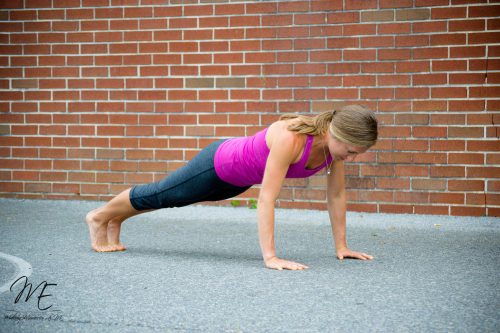Starting out sappy, but definitely heading in the direction of fitness, I promise.
I don’t think I ever feel quite as inadequate as I do when I am in Southern California. My clothes don’t fit right–or maybe they are straight up the wrong clothes?–my hair is too wavy–or is it too straight?–and I definitely don’t have enough money. I just returned from a vacation there.
Throughout my trip, lifestyle envy kept tapping me on the shoulder, but it didn’t linger. I didn’t invite it to stay perched there, whispering in my ear all of my shortcomings.
For the first time in recent memory, I saw it all, enjoyed it all, but wanted nothing more than what my life already is. I thought, “good for them” and then went back to reveling in my husband, my family, my friends, my life and all of the glorious-ness that it is.
[I also was a tiny bit cold nearly the entire time I was there. Don’t tell anyone, but I craved the warm blanket of humidity with which Pennsylvania envelops its inhabitants. Needless to say, it feels good to be home.]
This actually does relate to fitness…I think. Has anyone else experienced this shift in gratitude? Have you ever noticed a change from covetousness to appreciation? Perhaps part of it is natural with age, but I also believe it to be linked with an increase in empowerment and confidence and a coinciding decrease in the pursuit of perfection.
I am currently transitioning from the pursuit of the perfect body to the pursuit of success over whatever challenge I deem worthy of my time. Strength development? Speed enhancement? Sustainability? There is so much empowerment in letting go of perfection and embracing genuine growth instead.
This actually does relate–ever so slightly–to timers…I think.
When it comes to progress, timers offer an array of means. We have already discussed how timers prohibit cheating, so let’s take a look now at how this can benefit us when tracking and promoting progress.
Timers for Progress, Part Dos
If you are looking to increase endurance, I am sure you’ve considered increasing work time. Many “Couch to 5K” programs employ this concept perfectly: Start out walking, and then gradually add in periods of running, all the while mostly increasing overall distance (and thus time) until the participant can endure an entire 5K.
This same concept can be applied to kettlebell training as well. Pat often prescribes “time on, time off” types of workouts.
As an example, let’s use a classic 10-minute “30 seconds on, 30 seconds off” scheme for kettlebell swings. If you aren’t there yet, you can manipulate the scheme for shorter work periods and/or longer rest periods. From there, you can add overall time by going for, say, 12 minutes, or you can manipulate the work and rest periods to keep pushing your limits. As you progress, you will build endurance and improve your conditioning (not to mention, ramp up your calorie-burn!) by lengthening the work periods and shortening the rest periods.
When looking to increase strength, the same principles can be applied. If you were previously swinging a 20-kg kettlebell for 10 minutes for 10 total sets of 40 seconds of work and 20 seconds of rest, you can bump up the weight to 24 kg for 10 minutes of 10 total sets of 15 seconds of work and 45 seconds of rest. You don’t count reps. You just set the timer and put in your best effort for the work period. Even just adding a few more seconds of work and a few fewer seconds of rest is a great way to continue forcing improvement in your performance.
Back to California…I ended up working out at a gym that had a rope trainer. Has anyone used one of these? I had not known they existed, but it was the perfect x-factor for my workouts in a foreign gym. It’s basically a cable machine without weight plates (with resistance chosen 1-10) and with a loop of rope rather than a length of rope created to attach to a variety of “handles”; the point is to grip the rope itself and then perform whichever movement you’d like, based on where you position the lever point and your body. I chose just to do an upper-body climbing movement, pulling the rope down, alternating hands.
All of this to say, it was EXHAUSTING. Seriously. I decided to use it as a sort of metabolic finisher, and so I started with this plan of 30 seconds on, 20 seconds off for 5 minutes.
HA! After the first interval, I scaled back. I reset my timer app for 10 seconds on, 30 seconds off and repeated for 5 rounds instead. I took a one minute break and then went back at it for another 5 rounds. It was a great, novel exercise and a convenient use of my timer app. I briefly coveted access to a rope trainer for regular practice until I could complete my originally-planned 5×30 on/20 off.
If you are also without this equipment but in the mood for an equally-horrific upper-body burn, whip out your timer app and try this!
5-Minute Sweaty
50 sec: Close grip push-up
10 sec: REST
50 sec: Wide grip push-up
10 sec: REST
50 sec: Plank up-downs
10 sec: REST
50 sec: Shoulder taps
10 sec: REST
50: Plank hold
10 sec: Low/hovering plank hold
BASK IN THE BURN!
– Alyssa
